
Transistor Transistor Logic (TTL) is a digital integrated circuit (IC) technology so named because the input gating structure is performed by transistors rather than diodes, resistors and capacitors of earlier logic switches. Introduced in the early 1960s, TTL found few applications in mainframe computers, the major semiconductor market segment of the time, but emerged in the 1970s as the preferred logic family for new and rapidly expanding opportunities in mini-computers, peripherals, industrial controls, test equipment, instrumentation, and logic support functions (often called “glue logic”) in microprocessor-based systems.
The rise of TTL to dominate the IC logic business established a pattern familiar to observers of the semiconductor industry with its succession of DRAM, Microprocessor, and Flash “Wars.” Battles for supremacy for their products raged for years between all major suppliers on technical features, manufacturing cost, and marketing fronts. Although Texas Instruments (TI) emerged as the winner and is most closely associated with the product, the company was a relative late-comer to the market.
Fairchild Semiconductor, a division of Fairchild Camera and Instrument Corporation, introduced the first commercial family of monolithic ICs, a variant of direct coupled transistor logic (DCTL), under the trade name Micrologic at the IRE Show in New York in March 1961. According to TI engineer Bob Bergman, on seeing the new planar structure “it was decided to catch up with Fairchild’s technology in six months.” [1] The company announced its Series 51 DCTL family in November of that year. Other vendors, including Motorola and Philco, copied the Fairchild line under the generic name RTL. Although NASA’s 1962 selection of Micrologic for the Apollo moon mission guidance computer and other aerospace processor designs assured Fairchild of important future business, many engineers were not comfortable with its limited “noise margin.” Semiconductor manufacturers explored numerous improved configurations to encourage more computer designers to use their ICs.
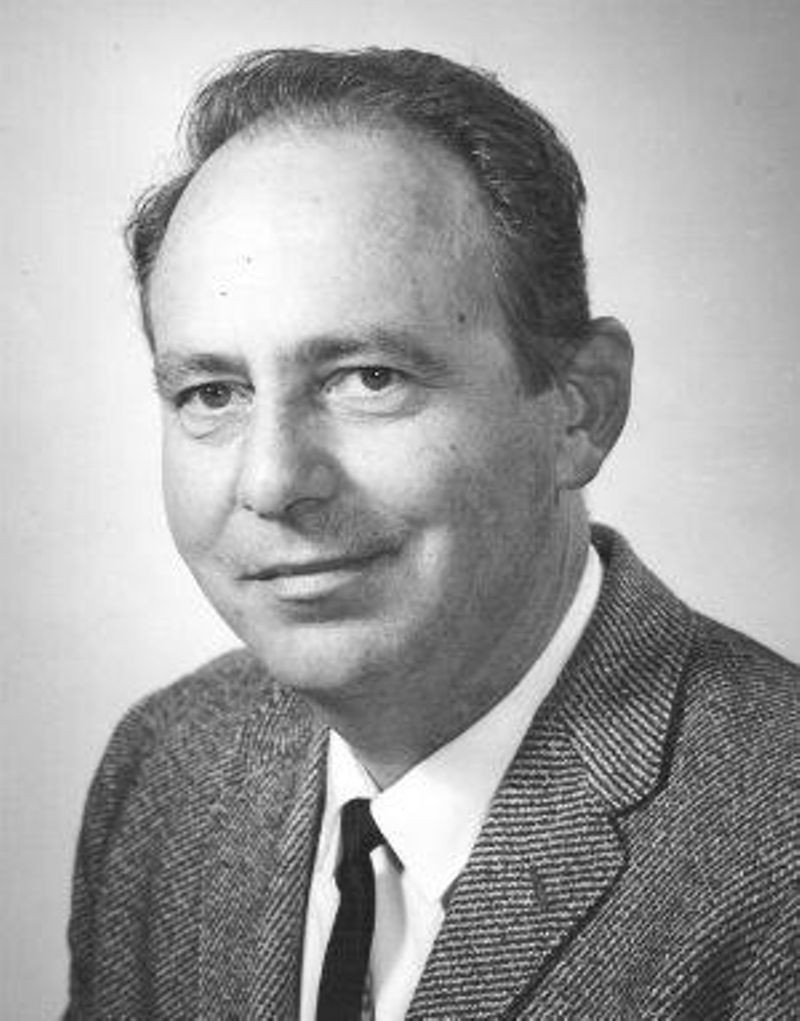
James L. Buie (1920-1988). Courtesy: Janet Reasoner
Decorated World War II aviator and University of Southern California electrical engineering graduate, James Buie joined power transistor pioneer Pacific Semiconductors, Inc., (PSI) in Culver City, CA in 1954 where he worked on high-speed, discrete transistor switching circuits. In September 1961, he filed a patent for integrated transistor-coupled transistor logic circuits that he claimed offered improved reliability, lower cost, and higher speed than DCTL. [2] Buie built test circuits and his patent was granted in 1966, but PSI, by then owned by TRW, never introduced commercial devices.
On March 9, 1961 Fairchild applications engineer Robert (Bob) Beeson described a similar circuit configuration in his patent notebook that he called transistor-transistor logic (TTL). Process engineer David Allison witnessed the disclosure and is credited with coining the popular nickname “T-squared” that was written as T2L. [3] Micrologic product engineer Lionel Kattner noted that “it might be easier to make” in integrated form than diode transistor logic (DTL), a discrete transistor circuit that was familiar to many computer designers.
Beeson tested several TTL circuit variations and submitted the ideas as a paper for the February 1962 ISSCC conference. [4] As Beeson had left the company, ETH Zurich, Switzerland and Caltech graduate Heinz Rüegg wrote and presented the paper in Philadelphia under the title “New forms of All Transistor Logic.” The published abstract noted that the circuit was “not perfectly ideal” but the issues could be negated by appropriate process controls.
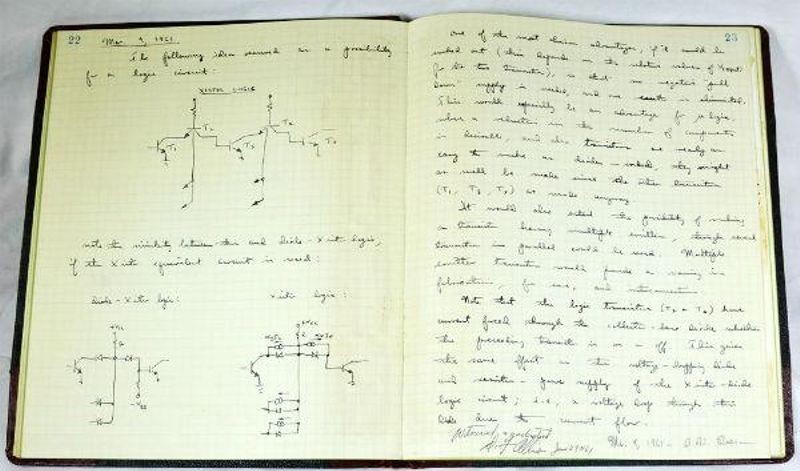
Fairchild Patent Notebook of Robert H. Beeson, March 9, 1961. CHM Collection
Allison and Kattner left Fairchild shortly after Beeson’s disclosure to cofound Signetics Corporation, the first semiconductor company to make only ICs. Despite his earlier “easier to make” comment about TTL, Kattner felt at the time that “the DTL circuit approach was the only way to go in the marketplace.” [5] In March 1962 Signetics announced Utilogic, a DTL family designed by another Fairchild alumnus Orville Baker that solved major user objections to Micrologic.
Exploring options for a future Fairchild Micrologic II family, Rüegg compared DTL and TTL circuit approaches. His notebook entry for March 6, 1962 concluded that each offered a different mix of “good” and “marginal” characteristics. [6] Gordon Moore, then director of research, noted that while TTL “is extremely simple, fast, and easy to integrate … if the additional components necessary to cure these problems are added … the advantages disappear rapidly.” [7] His notebooks record extensive discussions regarding selection of the next generation of ICs [8]. At one point he expresses frustration over a lack of direction – “As far as I can see this whole area of digital integrated circuitry is badly up in the air.” [9]
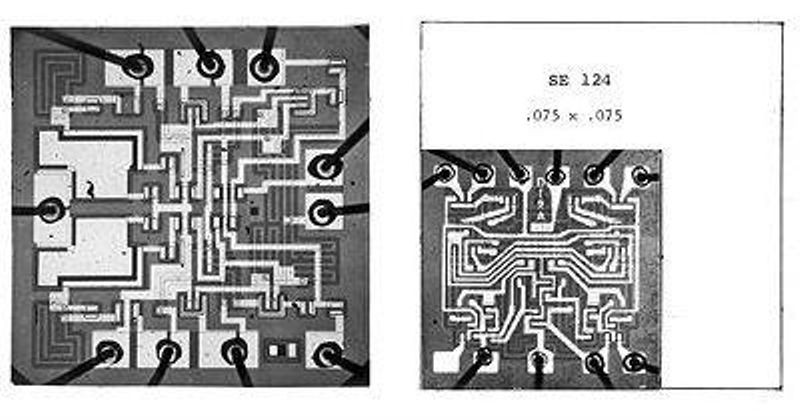
Signetics vs. Fairchild DTL flip-flop die sizes. CHM Collection
Probably because of the market acceptance of the Signetics product and the problems noted by Moore, Fairchild elected to pursue DTL for its second generation logic family. Designed by Robert Seeds, under Device Development section head Pierre Lamond, the DTL 930 family offered faster speed and, with a smaller die size, was priced at less than 50% of Utilogic. The Fairchild line became the industry standard and was alternate-sourced by ten other manufacturers. A portfolio that also included custom designs for major computer manufacturers and linear circuits ensured that Fairchild remained the largest vendor of ICs through 1967.
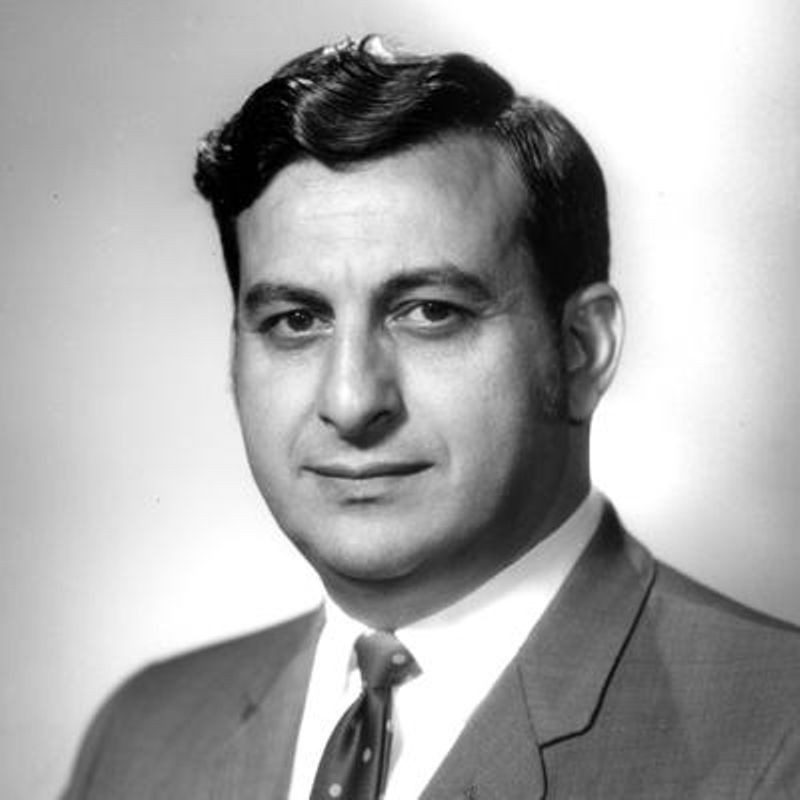
Thomas A. Longo. Credit: Fairchild Camera & Instrument
Thomas (Tom) Longo headed device research at Sylvania Electronic Components, Needham, MA where he developed high-speed switching transistor processes. On reading the Beeson-Rüegg paper he applied his technology to an experimental TTL circuit. After working with engineers Richard Bohn and I. Feinberg to address the issues that concerned Moore, he presented a paper on SUHL (Sylvania Universal High-Level Logic) in 1963. [10] Litton Guidance selected Longo’s dual-gate design for its high-speed advantage in the Hughes Phoenix missile computer, the first practical application of TTL, and Sylvania briefly became an industry leader.
Longo moved to Transitron as General Manager to establish an IC business where he proceeded to alternate source the SUHL TTL line. Along with Fairchild and TI, Transitron also won a contract to build the “Phoenix gate” for Litton. At a conference in the spring of 1964, Longo saw a presentation of a new TI SN5400 Series IC family. Design manager Jerry Luecke and his engineers had essentially replicated the Sylvania circuits in a TI process. [11] With its manufacturing and marketing muscle, TI proceeded to win designs in important military projects.
By introducing a low-cost version of its TTL family, in an easy-to-use plastic package modeled on a Dual-Inline-Package (DIP) pioneered by Fairchild, TI entered the industrial market with the SN7400 Series in 1966. With management that spun-out of Fairchild in 1967, National Semiconductor second-sourced the TI family, added a set of Tri-State devices invented by Dale Mrazek, and helped to the establish the 7400 Series as the new preferred general-purpose logic family. Motorola, Signetics, Sprague, and other vendors followed suit.
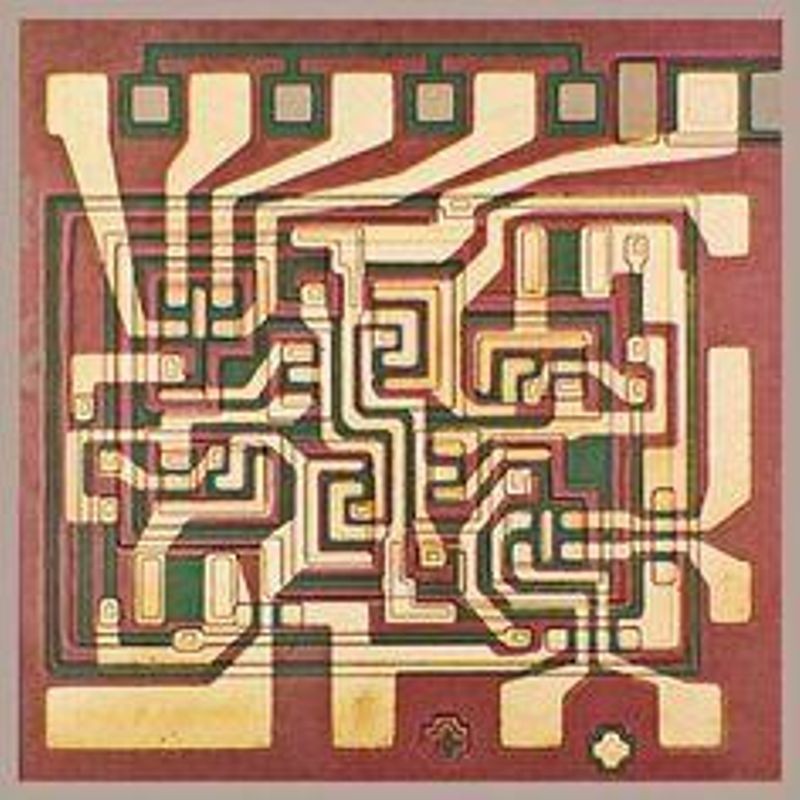
Fairchild Pheonix TTL gate die (1964). Courtesy: Fairchild Semiconductor International, Inc.
Although Fairchild had built the” Phoenix gate” in 1964 and possessed the technology to produce TTL products, it was slow to react to the changing market, being distracted by management issues and a business recession. By taking advantage of process improvements, applications engineers John Nichols and Clive Ghest saw an opportunity to leapfrog the TI offering of simple gate and flip-flop functions by creating more highly integrated TTL products of 30 to 50 gates in complexity. Fairchild’s 9300 series of MSI (Medium Scale Integration) devices included shift registers, counters, and arithmetic logic units (ALUs). The revolutionary Data General Nova minicomputer introduced in 1969 squeezed more than half the system logic functionality into Fairchild MSI chips.[12]
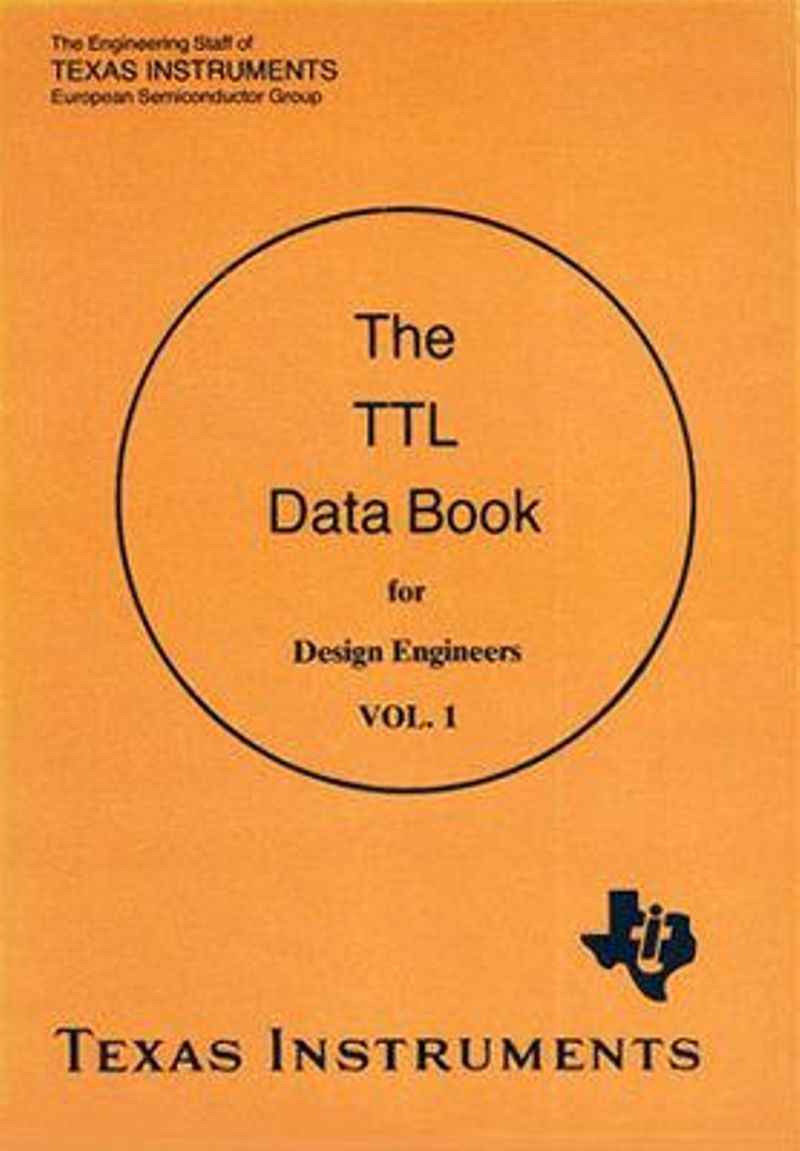
The most popular IC data book of the 1970s. Courtesy: Texas Instruments, Inc.
TI recognized the threat to its business and copied most of the new Fairchild devices under 74xx part numbers. The popular 9300 register, for example, became the 74195 and the 9341 ALU became more widely known as the 74181. New technologies, including Schottky diodes, CMOS, and oxide isolation, improved speed, lowered power consumption and increased the complexity of TTL functions to include memory devices. Fairchild eventually emerged as the second largest manufacturer of TTL, but TI remained the dominant and most profitable player with more than 50% of a worldwide market that reached three quarters of a billion dollars in 1975.
Many have questioned Fairchild’s failure to exploit its early lead in what became the most important semiconductor market of the early 1970s. The authors of a recent biography of Gordon Moore ask “Why did Gordon Moore allow himself to be overtaken?” They conclude that “Moore was a physical chemist at heart; he could be determinedly competitive when roused to engagement, but in business matters his skills were still nascent and immature. … in this case, he failed to grasp the importance of TTL and to position his lab at the front of the pack. In so doing, he lost the chance to exploit the most commercially successful logic form of the time. It was an important lesson. Moore says that, in the early 1960s, “we didn’t have any idea of the magnitude of the opportunity we were dealing with. We were still a bunch of guys in a laboratory, amazed that people actually wanted to buy our products.” [13]
The path to success was not easy or any more obvious at TI in the early days. According to marketing manager Charles Phipps, “To the frustrations of the Semiconductor Group’s Division management, the IC program with its long delays in gaining neutral cash flows, continuous reach for new process and packaging technologies and looser financial disciplines had major losses during these years … Management’s reaction was similar to that of venture capitalists, and in the first 5 years, there were five different department heads and a turnover of many of the managers reporting to them.” [14] As late as 1967 when TTL designer Jeff Kalb left to join National, at TI they “still weren’t sure TTL would win the logic race … the thinking was that Motorola still had a chance to win with its MECL line.” [15] TRW, which had inherited Buie’s fundamental TTL patent, chose not to engage in the competitive general-purpose logic market.